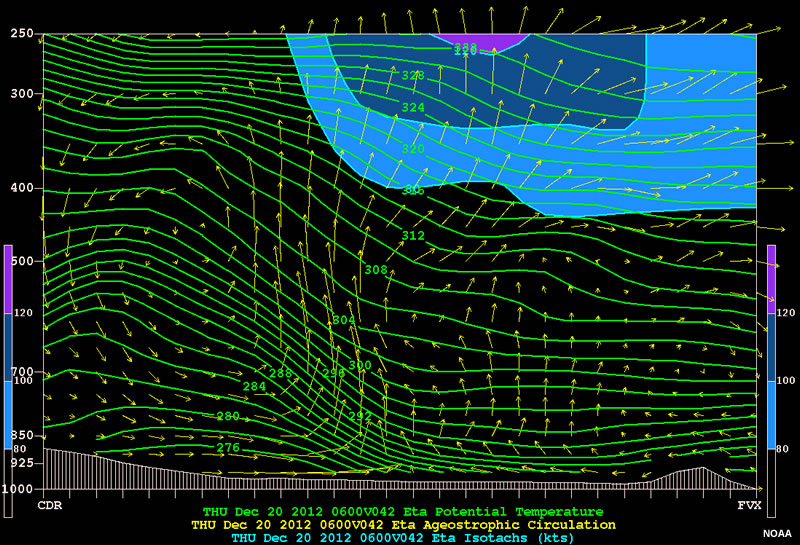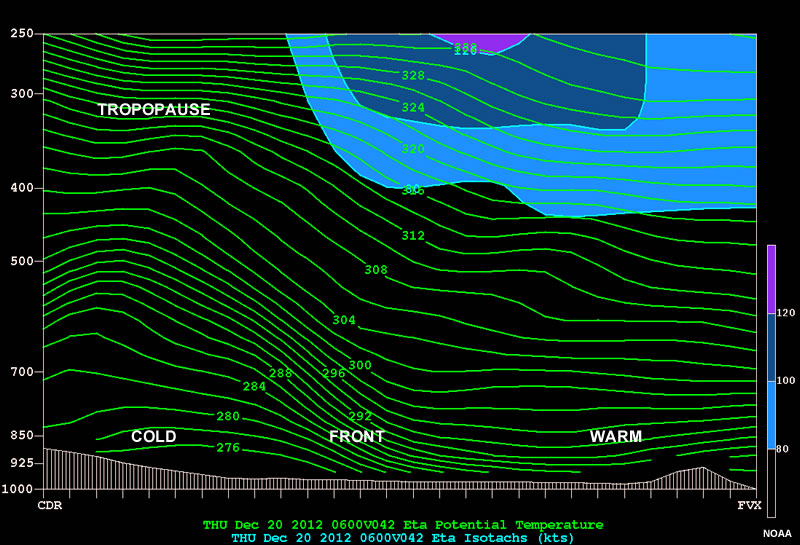Pre-Lab: Understanding Potential Temperature as a Vertical Coordinate
The troposphere is generally stable to dry processes, except in very shallow and narrow locations. So, most of the time we can safely use potential temperature as a vertical coordinate during synoptic-scale analysis.
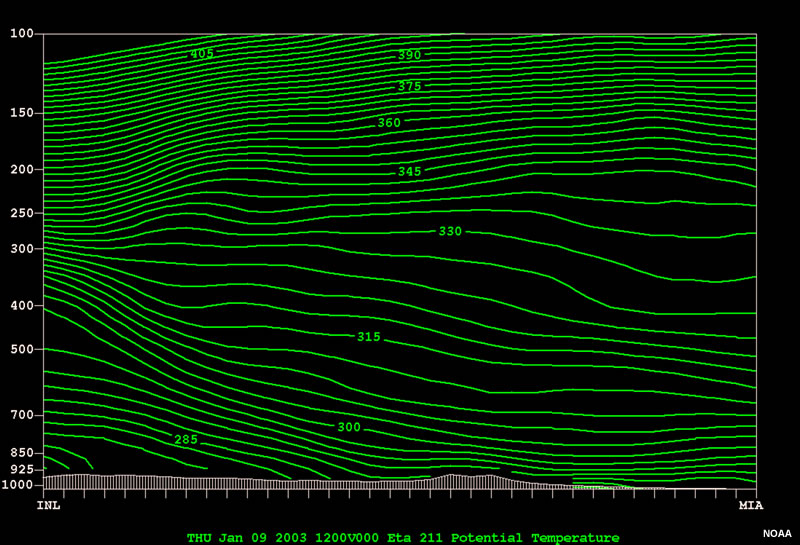
By definition, potential temperature increases with height, as it is the temperature that a parcel of air would have if brought dry adiabatically to a reference pressure level, usually 1000 mb, which represents the surface at sea level. The higher up the parcel begins, the more it will be adiabatically warmed before reaching the surface.
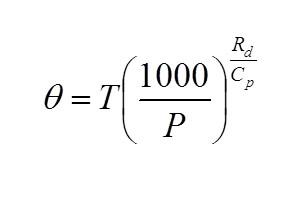
If we revisit the cross-section above, a few key points are apparent. First, potential temperature increases with height throughout the atmosphere (here from International Fall, MN to Miami, FL). Second, the more tightly packed the isentropes are in the vertical, the more statically stable the atmosphere is. Note the tightly packed isentropes above 200 mb - this is very stable air above the tropopause.
Finally, you may notice that some of the isentropes have a significant slope. The slope of an isentrope is much greater than that of a pressure surface for a given thermal gradient. Isentropes slope down toward warm air, and up toward colder air - the opposite of pressure surface orientations.
Thus, a typical frontal boundary may look something like what we see below. In this case colder air lies to the north, warmer air lies to the south, and very tightly packed isentropes exist where the two airmasses meet. Note that the isentropes are spaced further apart within the warmer airmass. This is an indication of lower static stability.
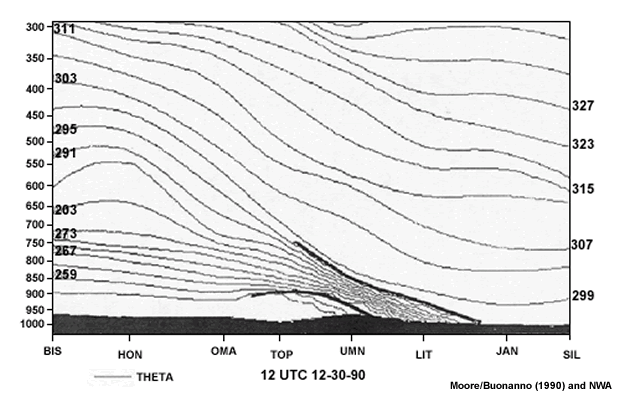
A cross section of a warm front shares similar characteristics. A warmer, southern airmass and a cooler, northern airmass, with a tightly packed area of isentropes in between, as seen in the lower left of this cross section from Bancroft, Ontario to Tallahassee, FL.
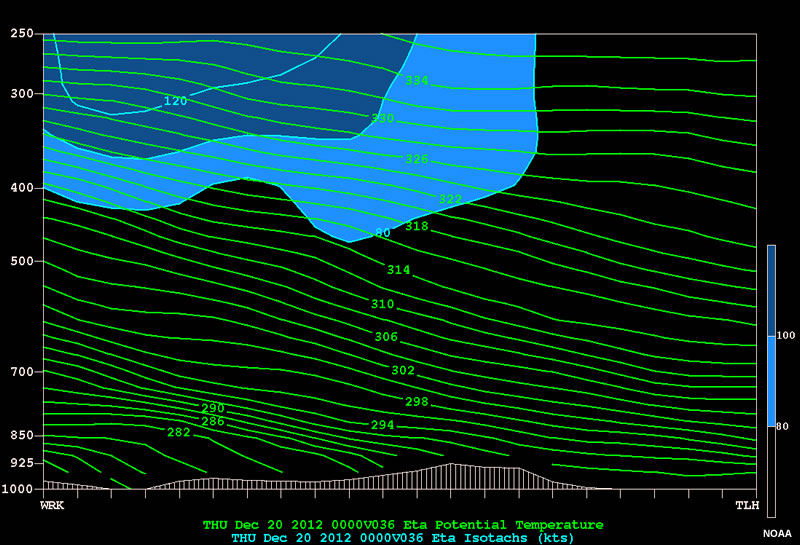
Here is another example - see if you can identify the airmasses by their temperature, the main frontal zone, and the tropopause.
Question 1 of 1
Drag the appropriate labels onto the cross-section to indicate where each airmass, the frontal boundary and tropopause exists. This cross sections runs from Chadron, NE (CDR) to Farmville, VA (FVX).
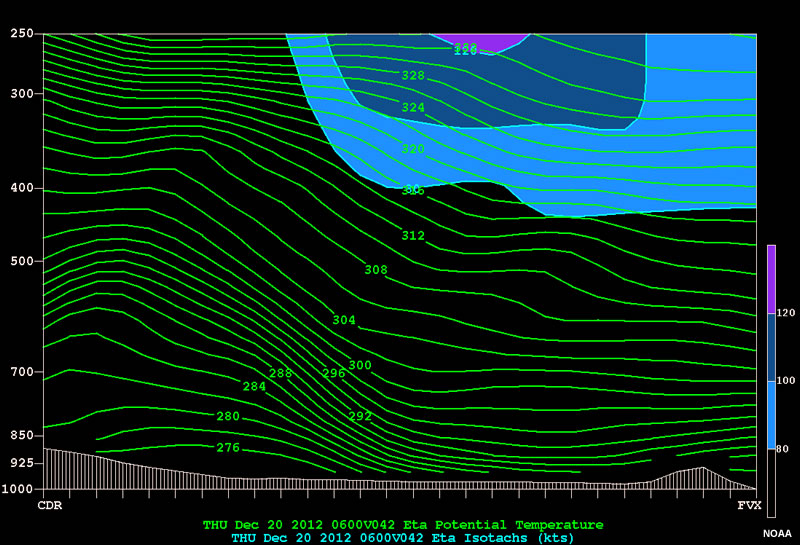
Much like the previous examples, cold air exists to the west, warm air exists to the east, and the tightly packed isentropes indicate the cold frontal boundary between the two airmasses. The tropopause is discernable just below the area at upper left, in which the isentropes become very densely spaced above about 300 mb. It quickly extends eastward and upward off the page above 250 mb.
Cross sections of potential temperature or equivalent potential temperature can also reveal the structure of jets and tropopause folds, as in this conceptual diagram:
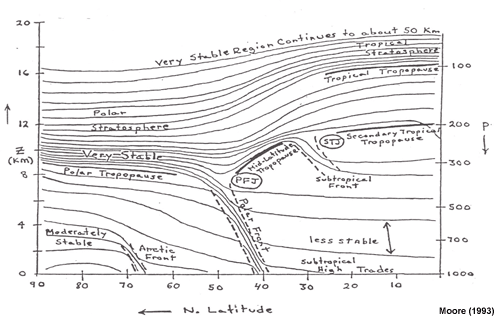
While we will not add isentropic potential vorticity in this lab, we can notice the placement of the polar front jet above relative to the front itself. The strength of ageostrophic circulations in this region will depend upon whether the cross-section cuts through the entrance or exit region of the jet, and upon the position of the front relative to the jet.
Since fronts generate their own ageostrophic circulations in an attempt to restore thermal wind balance (much like that of jet streaks), the horizontal spacing and alignment of the front underneath the jet can enhance or interfere with the vertical motions induced by the jet. In the example below, ascent from the left exit region of the jet streak and from the front are both aligned, producing very strong upward ageostrophic component in that region.
